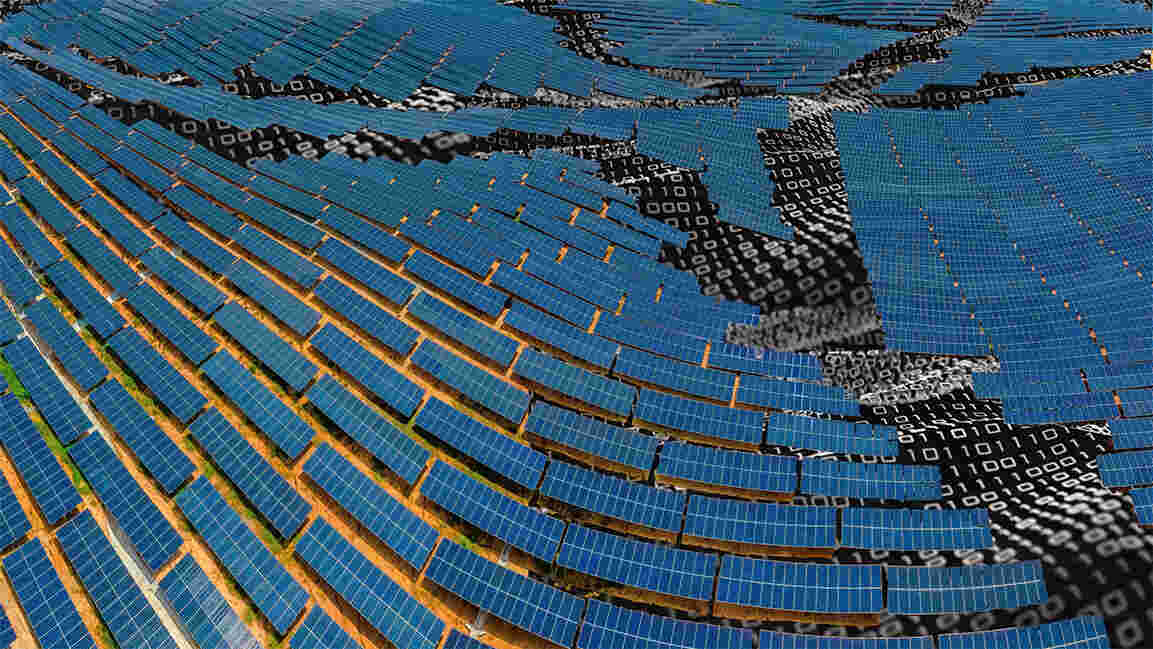- | 9:00 am
How is AI powering the future of solar energy in the Middle East?
We’re in the ‘beginning of the end’ era for fossil fuels as companies transition to sustainable alternatives to revolutionize energy

COP28 concluded with a commitment to shift away from fossil fuels. Yet, GlobalData’s forecast suggests that thermal power plants will still constitute 70% of total capacity in the Middle East’s energy transition by 2035.
But, technological advancements, especially in AI, have played a pivotal role in augmenting the efficiency of solar energy.
Alexandre Allegue, VP Board of MESIA (Middle East Solar Industry Association), reaffirms by stating, “The expansion of solar energy in the Middle East has played a pivotal role in strengthening the region’s economy by introducing diversification in its energy resources and diminishing reliance on traditional fossil fuels.”
Projections indicate substantial growth, with an estimated investment of $98 billion in solar power in GCC countries by 2030. This surge fosters economic development and creates employment opportunities within the region.
In contrast to global trends, where solar energy often required subsidies to make tariffs attractive, solar developments in the Middle East have surpassed the cost-effectiveness of conventional fossil fuels.
“This achievement can be attributed to factors such as the region’s high irradiation levels, the accessibility of low-cost capital, and the implementation of Independent Power Production (IPP) frameworks. These elements collectively contribute to the region’s ability to establish competitive and sustainable solar energy initiatives, propelling its position as a leader in renewable energy adoption,” adds Allegue.
ADVANCEMENTS TRANSFORMING SOLAR ENERGY
The UAE, with its portfolio of power stations that include the Noor Abu Dhabi Solar Power Plant, Shams Solar Power Station in Abu Dhabi, and the Mohammed bin Rashid Al Maktoum Solar Park in Dubai, is striving to be a leader in solar energy by using advanced technology, according to Hussain Al Mahmoudi, CEO of Sharjah Research Technology and Innovation Park (SRTIP). “The UAE aims to get half its energy from renewable sources by 2050.”
SRTI Park also collaborates on clean energy projects with global partners and companies, including solar-powered vehicles.
AI-driven predictive analytics also enhance solar panel performance by analyzing weather patterns, fine-tuning panel angles, and accurately predicting maintenance requirements. These advancements have markedly elevated energy output while concurrently decreasing operational expenses.
Allegue adds that this collective improvement has been instrumental in reducing the cost of solar electricity, positioning it as a more competitive and viable energy source within the overall energy mix.
AI-DRIVEN SOLAR EFFICIENCY
Marco Arcelli, CEO at ACWA Power, says, “In the last two decades, the world has mastered the utilization of solar, wind, water, and geothermal power. Today, renewable energies are the most economical and rapid means of electricity production.”
And during this phase, AI has emerged as a transformative force, revolutionizing these traditional processes.
With AI, we can optimize the performance of solar panels, ensuring they operate at their maximum potential to generate clean and renewable energy.
Mahmoudi highlights that AI allows us to assess the optimal utilization of solar power using specialized algorithms for data analysis. This utilization of AI has the potential to significantly cut down costs for households and businesses.
He explains, “We use Microinverters or DC optimizers that enable individual module monitoring in solar energy. AI can monitor each module and microinverter, so if there is a malfunction, the homeowner or the PV firm could be contacted instantly to remedy the problem.”
On the other hand, Allegue points out that AI empowers intelligent monitoring and control of solar energy systems through real-time data analysis, enabling proactive adjustments within the system.
“Machine learning algorithms play a crucial role in pinpointing performance discrepancies, fine-tuning energy output, and effectively managing fluctuations, amplifying overall system efficiency and ensuring optimal energy generation. For instance, in a sandstorm affecting the solar plant, the trackers can predict and adjust panel angles to mitigate dust deposition, thereby maintaining high production yields.”
Additionally, AI is utilized for proactive monitoring, integrating weather forecasts, and forecasting radiation impacts on the system, enabling preemptive actions to optimize performance under varying conditions.
SOLAR’S IMPACT ON AUTONOMY
The Middle East only partially depended on solar power to achieve energy independence. Allegue points out that a significant portion of solar panels is imported, mainly from China.
Nevertheless, the region has achieved the world’s most cost-effective levelized electricity cost, defying predictions made a few years ago regarding the “law of moor.”
He says, “The cost of solar electricity has plummeted by over ten times in the past decade, decreasing from $0.13/kWh in 2012 to a remarkable $0.01/kWh. Saudi Arabia and the UAE were key drivers in this cost reduction. Factors such as the regulatory framework, project sizes in tenders, allocation of capital costs, and financial innovation, like project financing, contributed to the Middle East’s ability to surpass higher renewable energy targets.”
WHAT’S YET TO COME?
Arcelli says that ACWA Power has been constructing one of the world’s largest plants and achieving competitive tariffs in solar photovoltaic (PV) and concentrated solar power (CSP). However, recognizing that addressing climate change requires more comprehensive efforts.
Another sector poised for growth is solar for desalination, as the demand for clean water continues to rise.
While designing large-scale desalination plants, ACWA Power achieves this through decarbonizing operations, data-led insights, and research partnerships with academia and R&D firms, adds Arcelli.
Additionally, adopting electric vehicles (EVs) will further stimulate solar development, as it is the cheapest and cleanest way to charge these batteries.
With continuous technological advancements and supportive government policies promoting renewable energy, the region is expected to experience substantial expansion in solar power capacity.
For Allegue, the growth trajectory aligns with ambitious renewable energy targets in the Middle East, with the UAE aiming for 30% renewable energy by 2030 and Saudi Arabia targeting over 40%.






































